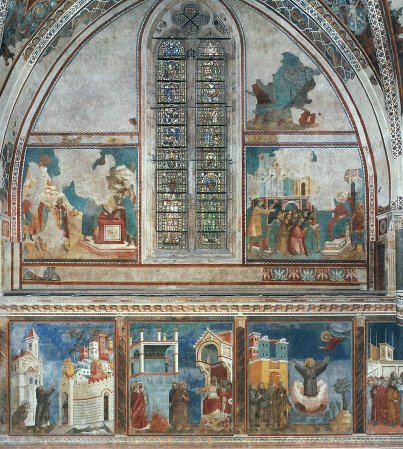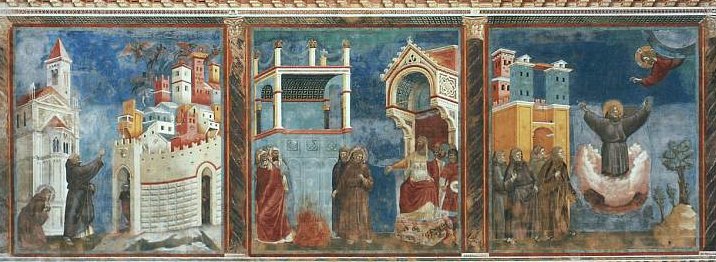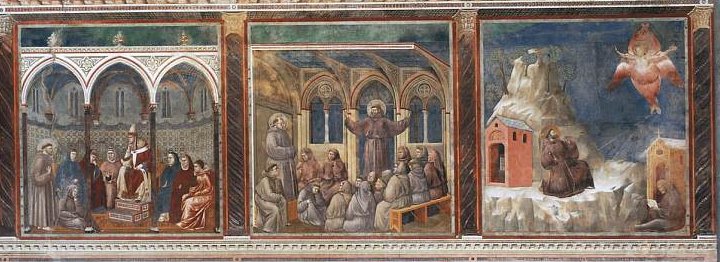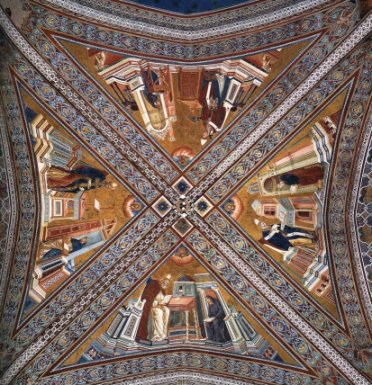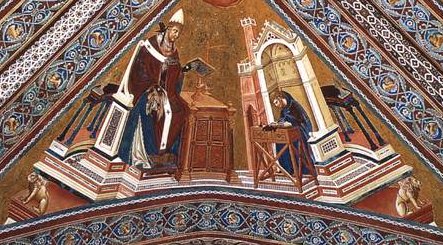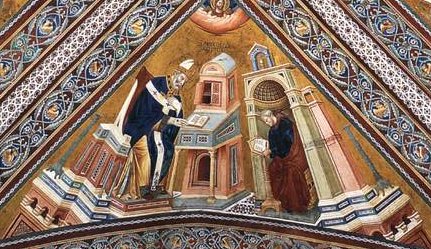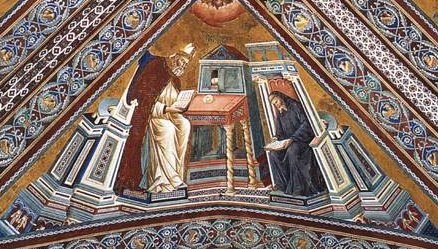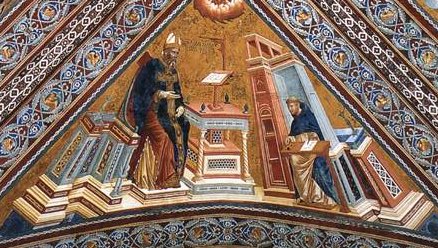|
Upper Church: bay 1 |
|
|
S |
|
| North wall | |
|
|
|
|
|
|
| Old Testament images.
Top register: sacrifice of Cain and Abel (lost) the killing of Abel (mostly lost).
Middle register: Joseph thrown in to the well by his brothers, Joseph
pardons his brothers. Franciscan images: 10. Casting out the Devils at Arezzo. 11. Trial by fire before the Sultan. 12. The Ecstasy of Francis. It seems that the devils in Arezzo weren't supernatural at all, but were those equally wicked Ghibellines, supporters of the Holy Roman Emperor (Frederick II) instead of the pope. He wasn't Roman or particularly holy. Despite this, the casting out is being done properly here. Francis was not ordained, so the job had to be done by a priest, shown in the centre of the image: Francis is praying behind him. Note the Ghibelline style of notched crenulations on the wall, underlining the political message of the fresco. The Battle of Campaldino had taken place in1289, near Arezzo, and the Ghibellines of Arezzo had been soundly thrashed by the Guelphs. There is another theme here. A major concern of the Franciscan order was to make it clear that they were not heretical, so here Francis is supporting the pope and the established authority. The same subject appears in the second image: this refers to Francis's journey to Egypt to deal with Muslim infidels. Unlikely as it seems, Francis was warmly welcomed by the Sultan Malik el-Kamil (meaning: king of the camels) and he spent a pleasant time debating theology with Muslim clerics. Someone suggested an ordeal by fire to see who was right, Muslims or Christians: the sultan, sensible man, thought it was not a good idea and did not allow it. This image spins the story by suggesting that it was the sultan's idea, with the Muslim scholars looking horrified. Once again, Francis triumphs over heresy. The final image shows the return of Francis from Egypt, where he found the movement he had founded splitting in to two, though this is not referred to here: the brothers are united behind him. Prayer was his solace, as described by Bonaventure, and here we see his vision of Christ. There is perhaps a reference here to the Transfiguration, and to the receiving of the stigmata to come. The Old Testament scenes show betrayal by brothers, which certainly resonates with Francis's situation. However, the Joseph story shows that forgiveness and reconciliation is possible. |
|
|
South wall. |
|
|
|
|
|
|
|
|
New testament images. Top
register: Baptism of
Christ, Christ among the Doctors. (Both images fragmentary.) Middle
register: Three Marys at the tomb. Lamentation over the Dead Christ. |
|
| Vault | |
|
|
|
|
|
|
|
|
|
|
The vault shows the doctors of the church;
Gregory, Ambrose, Augustine and Jerome. This is a pre 1997 image: Sadly,
Jerome was lost in the earthquake. |
|
|
|
|

